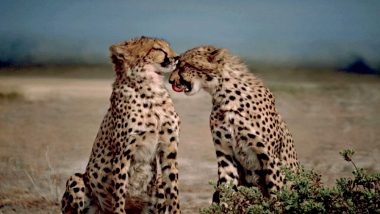World Wildlife Day is celebrated every year, globally on 3rd March since December 2013 to commemorate the day the Convention on International Trade in Endangered Species of Wild Fauna and Flora was signed in 1973.
The day was commissioned by the United Nations to raise awareness about the world’s wild flora and fauna and promote conservation efforts. This year, world wildlife day is celebrated under the theme: "Forests and Livelihoods: Sustaining People and Planet". World Wildlife Day 2021: From David Attenborough's 'A Life on Our Planet' to 'Chasing Coral', Eye-Opening Environmental Documentaries to Binge-Watch.
India: biodiversity hotspot for world’s most diverse & exquisite species
India is a land that inhabits diverse and exquisite species of wildlife. It is a biodiversity hotspot with various ecosystems ranging from the mighty Himalayas in the north to the evergreen rainforests in the south, the desert sands of the west to the marshy mangroves of the east.
India is home to about 7.6% of the world’s mammals, 14.7% of amphibians, 6% of birds, 6.2% of reptilians, and 6.0% of flowering plant species. India's forest lands nurture about 500 species of mammals and more than 2,000 species of birds.
Why is Wildlife conservation the need of the hour?
Each actor of our valuable ecosystem is intertwined in a delicate balance, where every action on part of one actor has a far-reaching impact on all other actors.
The reduction in the number of one animal can have a chain effect on other species that may be imminent for human subsistence. All animals play a vital role in the ecosystem. The loss or reduction of certain species can have a consequent effect on human food and water sources, critical for survival.
What does the future hold?
As Paul Oxton, Director, Wild Heart Wildlife Foundation and Wildlife Photographer from South Africa quotes “Only when the last of the animals’ horns, tusks, skin, and bones have been sold, will mankind realize that money can never buy back our wildlife”.
To ensure that this is not what the future holds for us and the generations to come, now is the time to make people aware of the dire consequences of losing our precious wildlife ecosystems. Now is the time to produce dynamic, innovative solutions to reverse trends of loss of ecosystems; thus reviving the lost glory of our vibrant biodiversity.













 Quickly
Quickly


